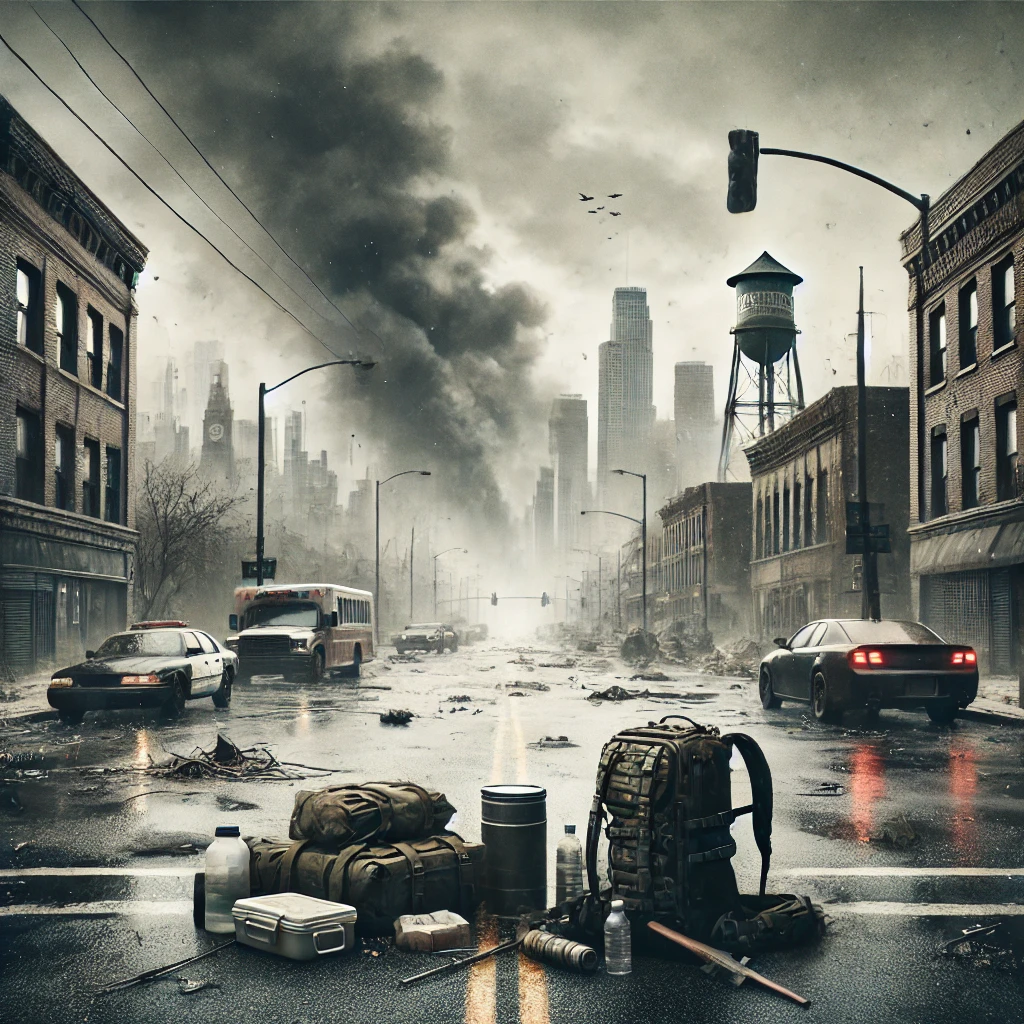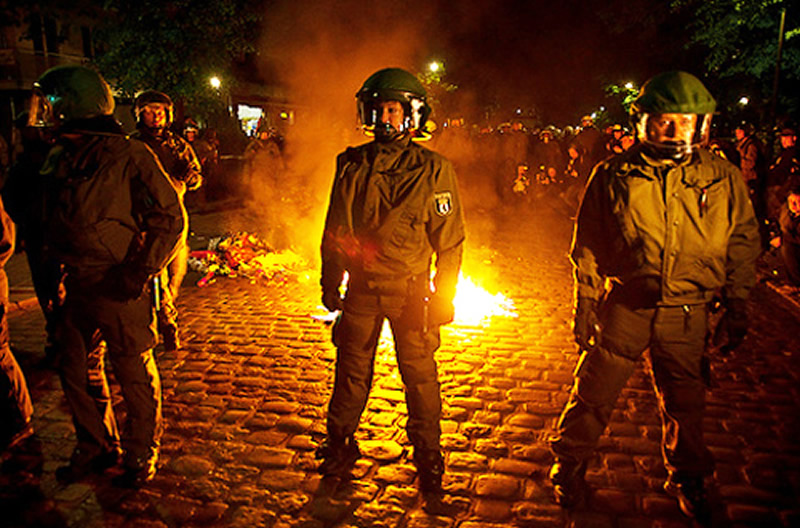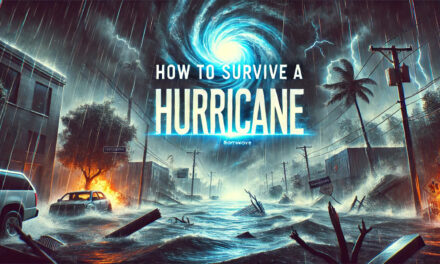In the event of a nuclear attack, preparation is your best defense. Here’s a step-by-step guide to surviving a nuclear bomb or war, including tips for emergency supplies, backup power generation, and self-defense.
Step 1: Find Immediate Shelter
Seek Shelter Quickly
The most important thing during a nuclear explosion is to get indoors immediately. Look for a building with thick, concrete walls or a basement. If a blast happens, take cover behind anything that can protect you from the shockwave. After the explosion, you have about 10 minutes before the radioactive fallout reaches your area. Use this time to find a suitable shelter with as many barriers as possible between you and the outside world.
Stay Inside and Stay Tuned
Once inside, stay there for at least 24 hours. Fallout radiation reduces rapidly after that period. Turn off all ventilation systems like fans and air conditioners to prevent radioactive particles from entering. Use radios or hand-crank devices to listen for emergency broadcasts with updates on the situation.
Step 2: Prepare for Fallout and Radiation
Emergency Food and Water Supplies
Have enough emergency food and water to last for at least two weeks. Focus on non-perishable items like canned goods, freeze-dried foods, and energy bars. Water should be stored in sealed containers, and you can set up a rainwater collection system for replenishment. If possible, keep water purification tablets on hand. Radiation can contaminate exposed food and water sources, so sealed storage is essential.
Protect Yourself from Radiation
To limit radiation exposure, remain in the most shielded area of your shelter, ideally underground or in the center of a building. Time, distance, and shielding are critical: limit the time you spend outside, stay as far as possible from radiation sources, and put dense materials (concrete or thick walls) between you and radioactive fallout.
Step 3: EMP-Proof Your Electronics
Backup Power Generation
Nuclear explosions can cause an electromagnetic pulse (EMP), which can disable electronic devices. To ensure you have access to power, consider using solar panels or generators. Additionally, store critical devices like radios or GPS units in a Faraday cage—a metal container designed to protect electronics from EMP effects.
Step 4: Self-Defense in a Post-Nuclear World
Equip Yourself with Weapons
Post-nuclear survival might require protecting yourself from looters or other desperate survivors. Keep a variety of self-defense tools, such as firearms, knives, and melee weapons like baseball bats or crowbars. In areas with increased lawlessness, these weapons can help protect your supplies and loved ones.
Step 5: Long-Term Survival: Living Off-Grid
Renewable Energy for Off-Grid Living
In the aftermath of a nuclear war, it’s likely that power grids will fail. Backup power generation like solar panels or wind turbines will keep your shelter functional. You can power essential devices and maintain communications with the outside world.
Foraging and Growing Your Own Food
Consider starting a small garden or learning basic foraging and hunting skills. With supplies potentially running low, growing your own food or learning to find edible plants and small game will help ensure long-term survival. Use backup power to maintain these activities as needed.
Essential Gear for Surviving a Nuclear Attack or War
A nuclear attack changes everything in an instant—obliterating infrastructure, contaminating resources, and forcing survivors to fend for themselves in a hostile environment. Preparation is no longer optional; it’s a matter of life or death. Having the right tools and supplies can dramatically increase your chances of survival and help you protect your family in the aftermath of a catastrophic event. Below are essential products that will help you endure the unimaginable and rebuild in the face of devastation.
Patriot Power Generator 2000X
The Patriot Power Generator 2000X is a critical lifeline when the grid goes down. Its advanced solar-powered design means you’ll have access to clean, renewable energy without relying on fuel supplies that will quickly run out in the chaos of a nuclear attack. This generator can power critical devices like refrigerators, medical equipment, and communication tools to keep you alive and connected.
The included 100-Watt solar panel and grab-and-go cart make it portable and practical for bug-out scenarios. With free expert training sessions, you’ll learn how to maximize its potential and tailor it to your survival needs. This generator isn’t just a backup; it’s your ticket to sustaining some normalcy in a world turned upside down.
Grid Doctor 3300 Solar Generator
When power needs go beyond the basics, the Grid Doctor 3300 Solar Generator steps in as a powerhouse capable of running larger appliances like full-sized refrigerators, microwaves, and even heating systems. In a nuclear survival scenario, this generator ensures that you can keep vital systems running for days, if not weeks, without interruption.
Its advanced features, including uninterrupted power supply (UPS) protection and Maximum Power Point Tracking (MPPT), make it a reliable option for prolonged emergencies. With 15 power ports and the ability to expand its battery capacity, the Grid Doctor 3300 offers unmatched versatility and independence.
Grid Doctor 300 Portable Generator
The Grid Doctor 300 Portable Generator is designed for mobility without sacrificing functionality. At just 8 pounds, it’s easy to carry but powerful enough to keep lights, communication devices, and small medical equipment running. Its compact design and stackable functionality make it ideal for quick evacuations or temporary shelters.
This generator is the perfect choice for those who need to stay light on their feet while maintaining access to essential power. Whether you’re bugging out or bunkering down, the Grid Doctor 300 delivers peace of mind when everything else fails.
Famine Fighter Survival Food
A nuclear attack will disrupt food supplies for months or even years. The Famine Fighter Survival Food kit provides a dependable source of sustenance with a 25-year shelf life. Packed with a variety of nutrient-dense, easy-to-prepare meals, this kit ensures your family won’t go hungry when resources are scarce.
With stackable containers and simple preparation instructions, the Famine Fighter kit is designed for both convenience and longevity. Whether you’re sheltering in place or on the move, it’s a crucial component of any nuclear survival plan, offering peace of mind and the energy to face each day’s challenges.
Operation Blackout Book
The aftermath of a nuclear attack will plunge society into darkness—both literally and figuratively. The Operation Blackout Book provides essential knowledge to navigate this new reality. From building EMP-proof energy systems to securing clean water and food supplies, this guide prepares you for the challenges of long-term survival.
With practical advice on protecting electronics, preserving communication, and making critical decisions in the first hour of a disaster, this book is an invaluable resource. It’s more than a guide—it’s a survival blueprint for facing the unthinkable.
Genesis Code Survival Seed Vault
Rebuilding after a nuclear attack starts with securing a sustainable food source. The Genesis Code Survival Seed Vault offers 20 varieties of heirloom seeds, allowing you to grow your own crops and ensure a steady supply of fresh food. Unlike hybrid seeds, these heirloom varieties can be replanted year after year, making them a renewable resource in an uncertain future.
Packaged in military-grade, airtight containers, the seeds are protected from radiation and environmental threats. This vault is your foundation for self-sufficiency, providing the tools to restore life even in the most devastated landscapes.
Alexapure Pro Water Filtration System
Clean water will be one of the scarcest resources after a nuclear attack. The Alexapure Pro Water Filtration System transforms contaminated water into safe drinking water, removing over 200 toxins, including heavy metals, bacteria, and viruses. Its gravity-powered design requires no electricity, making it a must-have for survival scenarios.
Capable of filtering 200 gallons per cartridge, the Alexapure Pro ensures your family has access to clean water when traditional supplies are compromised. In a world where every drop counts, this system is an indispensable asset.
VESTA Self-Powered Indoor Space Heater & Stove
In a nuclear winter, staying warm and fed is vital. The VESTA Self-Powered Indoor Space Heater & Stove is a dual-purpose device that provides heat and allows you to cook indoors safely. Powered by InstaFire canned heat, it’s lightweight and portable, making it ideal for emergency situations.
The VESTA can warm up to 200 square feet and cook meals with minimal smoke, ensuring both safety and stealth. It’s a crucial tool for maintaining comfort and survival in extreme conditions.
Tactistaff Survival Stick
Survival in the wild becomes inevitable when cities and infrastructure are destroyed. The Tactistaff Survival Stick is your all-in-one tool for navigating the outdoors and defending yourself against threats. With gear like a magnetic compass, fire starter, harpoon, and emergency whistle, this multi-functional tool is a must-have for nuclear survival.
Crafted from unbreakable aluminum alloy, the Tactistaff is both durable and lightweight, capable of withstanding the harshest environments. Its modular design allows it to adapt to any situation, whether you’re building a shelter, hunting for food, or protecting your family. In a world of uncertainty, the Tactistaff ensures you’re never unprepared.
Preparation is the key to survival in a nuclear attack or war. These tools and resources are designed to give you an edge in the face of unimaginable challenges, ensuring you can protect your family, sustain your needs, and rebuild when the dust settles.
Stay Safe, Stay Prepared
Knowing how to survive a nuclear bomb or nuclear war is critical in these worst-case scenarios. Preparation is key: secure a safe shelter, stockpile emergency food and water, EMP-proof your electronics, and have the tools to defend yourself. By thinking ahead and preparing, you can dramatically increase your chances of survival during a nuclear event.





